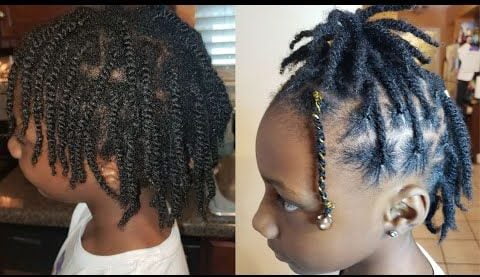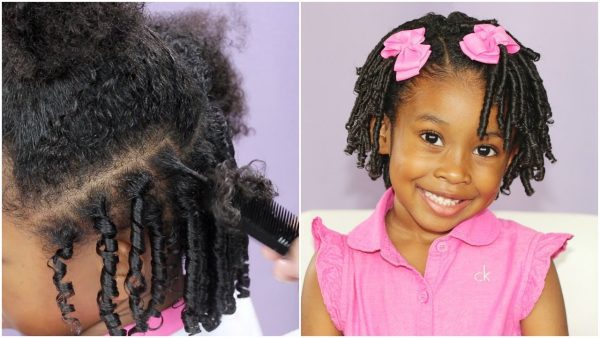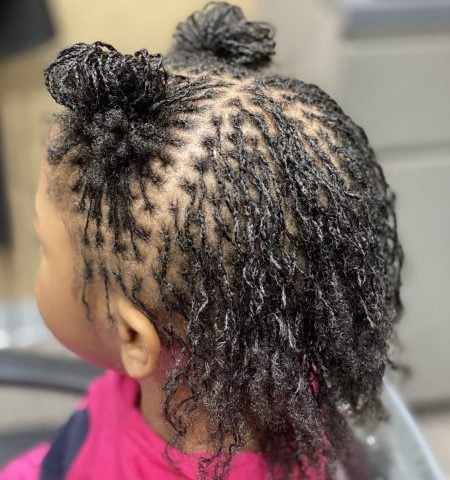Locs, or dreadlocks, are a distinctive and expressive hairstyle with a long cultural heritage. It might be overwhelming for parents to think about getting dreadlocks for their kids to navigate the world of styles and maintenance. This blog post explores the fascinating dreadlock styles for kids, providing styling and upkeep ideas as well as useful advice.
Dreadlock Styles For Kids
Dreadlock styles, which are typically associated with adults, are becoming more and more popular among children as a stylish and adaptable way for kids to express themselves. It offers countless opportunities for creativity and self-expression, regardless of your child’s preference for a more modest, classic style or something bolder and edgier. Parents can start dreadlocks on their children at any age, including childhood.
Why Choose Dreadlock Hairstyles For Kids?
Kids with dreadlock hairstyles can stand out and show off their uniqueness with a unique and fashionable appearance. It gives any child’s appearance a little flair and individuality with its textured appearance and rope-like strands. Furthermore, dreadlock hairstyles are adaptable and may be made to fit a child’s sense of style, whether that be a more laid-back or carefree vibe or a tidy and polished appearance.
Additionally, it offers low maintenance, protective styling, versatility, and cultural significance, making it a valuable addition to any child’s hairstyle, promoting healthy hair growth and personal expression.
Popular Dreadlock Styles For Kids
Two-strand twists

This easy hairstyle entails twisting hair sections together to produce tidy, well-defined locs.
Comb coils

Parts of hair are wrapped around a comb to form these tiny, coiled locs.
Sisterlocks

A unique tool is used to generate tiny, interlocking locs that have a clean, detailed look.
Freeform locs

This all-natural method lets hair grow spontaneously, giving the appearance of organic and distinctive hair.
Braided dreadlocks

Updos, cornrows, and other elaborate styles can be achieved with dreadlock braids to add originality.
Styling Tips For Kid’s Dreadlocks
To create dreadlocks for your child, start with healthy hair and seek professional guidance from a hairstylist. Use natural, soft hair care products designed specifically for dreadlocks; stay away from harsh chemicals and frequent washing. To avoid dryness and breakage, moisturize frequently with natural oils like coconut or olive oil. Accept creativity and give your child’s look personality by accessorizing with headbands, clips, and beads. While dreadlocks require minimal maintenance, they still need frequent touching up and care, so be prepared for ongoing effort.
Frequently Asked Questions and Answers About Dreadlock Styles For Kids
1. What are dreadlock hairstyles for kids?
Dreadlock hairstyles for kids involve allowing the hair to naturally mat and lock over time, resulting in rope-like strands that grow freely. Parents can customize these hairstyles to suit their child’s unique sense of style, incorporating various options such as braids, updos, and colored accents.
2. At what age can kids start getting dreadlocks?
Parents can start dreadlocks on their children at any age, including childhood. However, it is essential to consider the child’s hair texture, length, and ability to tolerate the locking process. Some parents choose to wait until their child’s hair is longer and more manageable before starting dreadlocks.
3. How long does it take for dreadlocks to form in kids’ hair?
The time it takes for dreadlocks to form in kids’ hair varies depending on factors such as hair texture, length, and maintenance routine. Generally, it can take several months to a year for dreadlocks to fully mature and develop.
4. Are there different types of dreadlock hairstyles for kids?
Yes, there are various types of dreadlock hairstyles for kids, including traditional freeform dreadlocks, braided dreadlocks, colored dreadlocks, and styled updos. These hairstyles offer versatility and allow kids to express their individuality through their hair.
5. How should dreadlocks for kids be maintained?
Proper maintenance is essential for keeping dreadlocks for kids looking their best. This includes regular washing with a gentle shampoo and conditioner, palm rolling to maintain shape, moisturizing with natural oils or moisturizers, and gentle handling to prevent breakage.
6. Are dreadlock hairstyles culturally appropriate for kids of all backgrounds?
Dreadlock hairstyles have deep cultural roots and hold significance in various communities around the world. Kids of all backgrounds can embrace dreadlock hairstyles as a form of self-expression and celebration of heritage, even though they have traditionally been associated with individuals of African descent. It is essential to approach the style with respect and cultural sensitivity.
7. Can kids participate in activities such as swimming and sports with dreadlock hairstyles?
Yes, kids with dreadlocks hairstyles can participate in various activities such as swimming and sports. However, it is essential to take proper precautions to protect the hair, such as wearing a swimming cap or tying the hair back securely to prevent tangling and damage.
Conclusion
Dreadlock hairstyles for kids are a fashionable and chic way for young people to express themselves and show off their individuality. Because of their adaptability, charm, and cultural significance, kids of all backgrounds are adopting deadlock hairstyles in greater numbers. Whether going for a classic, braided, or colored style, kids can embrace deadlock hairstyles as a special and empowering way to celebrate their heritage and stand out with confidence and flair.

Leave a Reply